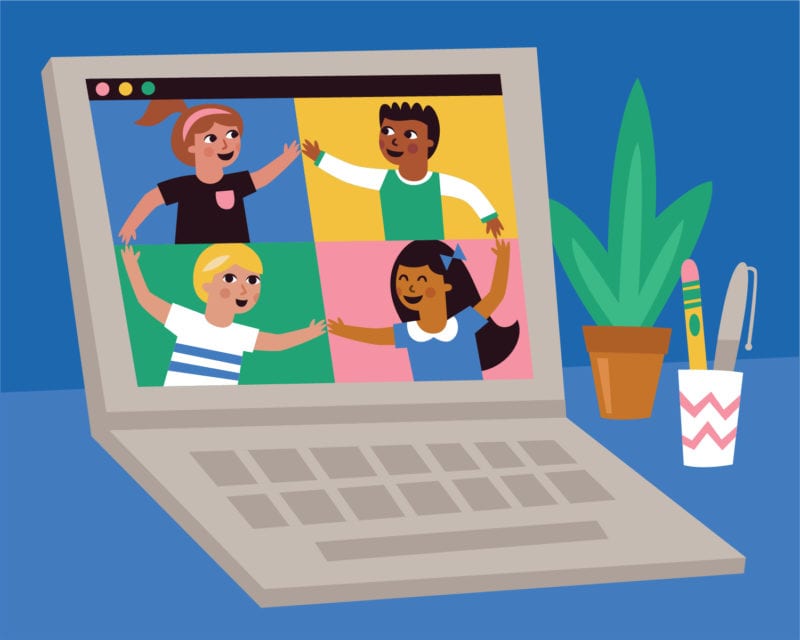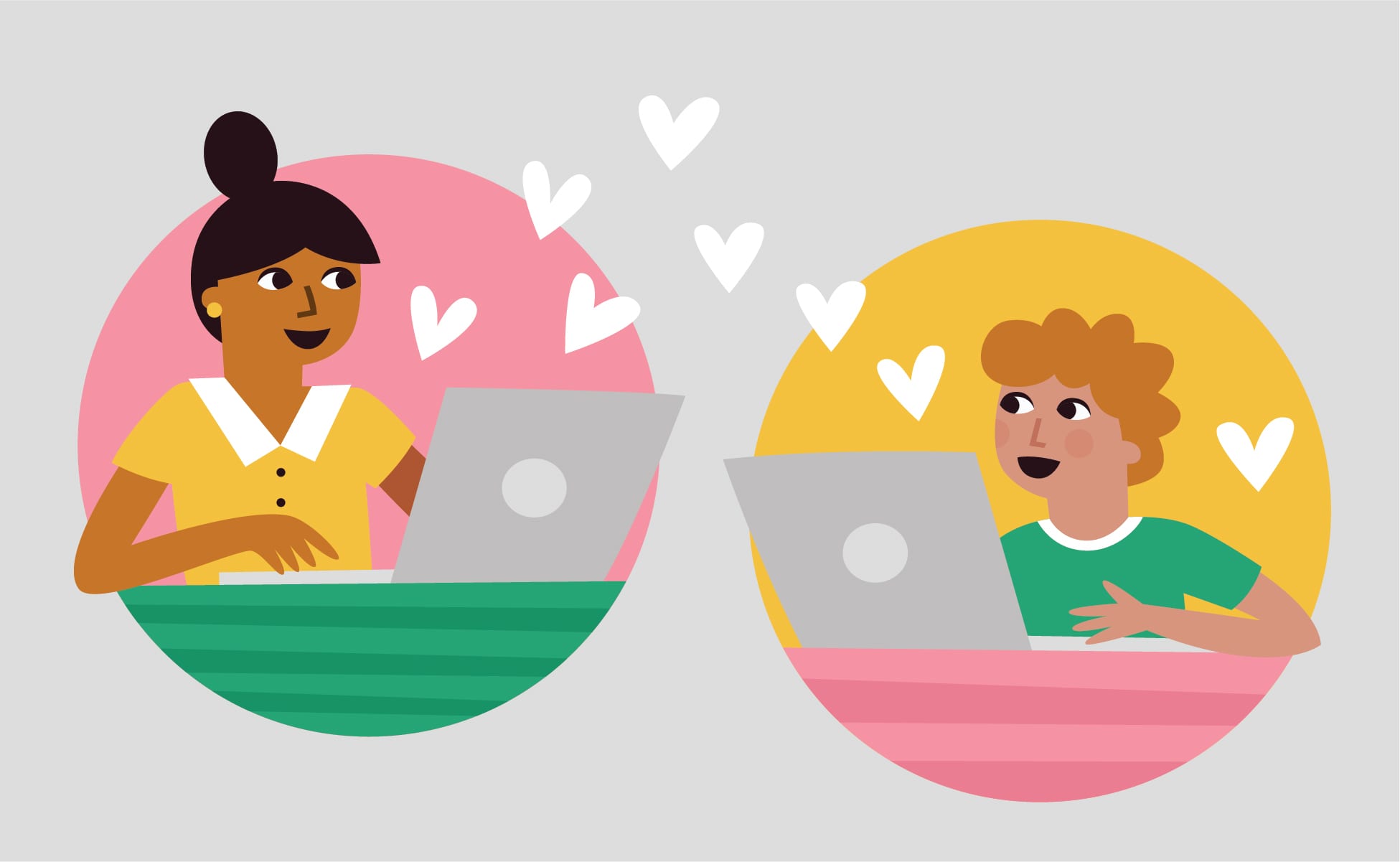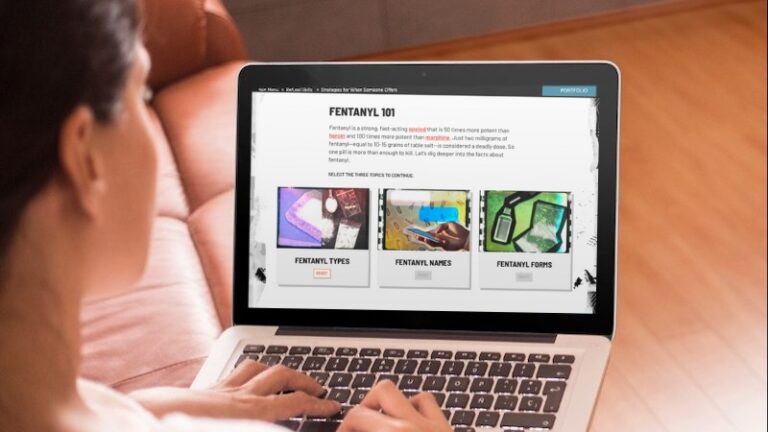The pandemic definitely affected all of us. Many families experienced financial worries and students suffered from a lack of social connection. That’s why building a strong class culture to support students’ social-emotional needs is more important than ever. Creating a classroom culture that supports social-emotional growth takes purposeful work. But, how do we build an inclusive class community when many of us are not physically together? How do we get to know our students as individuals, and how do they get to know one another? What are effective ways to teach social-emotional skills at a distance? How can digital and online SEL experiences help make this happen?
Building relationships and a positive class culture is still valuable online.
It may have looked different this year, but “connection and relationships are critical,” counsels Jenny Watson, a North Carolina Family and Consumer Sciences educator. “For some students, school is the only place they feel safe, loved, and cared for.” Ensuring kids are emotionally supported and are taught critical social-emotional skills sets them up for success, both in school and in life.
Some teachers are using a dedicated online SEL curriculum to fill in the gaps.

EVERFI is one option that offers engaging, interactive, game-based SEL lessons for kids of all ages. The lessons connect directly to standards to expand and deepen learning. Skills like mental wellness, self-awareness, and responsible decision making can all be practiced in a digital environment. Best of all, EVERFI’s digital social-emotional curricula are always free for all K-12 educators (unlike many of the free subscriptions offered in the spring that are now rolling back).
Explicitly teaching SEL helps kids make the transition to distance learning.
Jenny Watson uses EVERFI’s Character Playbook with her middle school students. “Character Playbook was a lifesaver making the transition to distance learning last spring,” she says. “The curriculum made my life, and my students’ lives, so much easier. The program addressed everything my students need to hear and talk about during quarantine: interpersonal relationships, communication skills, conflict resolution, working with people, decision making, understanding and managing emotions, and more.” While these skills are important during everyday life, they’re even more crucial during stressful, increasingly isolating times like those our students are now facing.
EVERFI social-emotional curriculum helps students learn more about who they are and what they need.
Missouri elementary school counselor Lola McClarnon uses EVERFI’s The Compassion Project program with her elementary students and likes to personalize the content from the lessons to address the unique needs of her classroom community. After completing a lesson, McClarnon talks with the students about what they’ve learned. She asks questions that focus specifically on her students and their needs, like “What can we do in our classroom to build compassion, to build trust?” EVERFI’s Compassion Project includes lessons like Defining Compassion, Our Emotions, Self-Care, We All Make Mistakes, Compassion Every Day, and more.
When it comes to communicating their own needs, we’ve seen an increased interest in the topic of student mental health throughout remote learning. In a recent survey of middle and high schoolers, one-third of students said mental wellness lessons are more relevant now than before the COVID-19 pandemic began. “Assessing and monitoring kids’ mental wellness in an online classroom is different than in a traditional school,” says eighth grade math teacher Kimberly Palocsay.
With online learning, it has to be easy.
The last thing students need is another complicated tool that requires adult assistance. And the last thing teachers need right now is a platform that requires a ton of planning and support. “Our teachers love the fact that with EVERFI, everything is laid out for them,” says Lola McClarnon. Teachers are already scrambling to adapt their curriculum to an entirely different model this fall. Using EVERFI’s resources means that they won’t have to create their SEL lessons from scratch.
It also has to be adaptable.
Teachers say they use EVERFI’s social-emotional curriculum in many different ways. Lola McClarnon explains: “Teachers and students can watch the videos together as a whole class, then assign the accompanying offline lessons for students to complete independently. Afterward, teachers and students can talk about what they’ve learned—with a partner, small group, or as part of a whole class discussion.”
Digital tools provide a fail-safe environment for students to practice SEL skills. Here’s a look at two lessons:
The Compassion Project
Lesson 1: Defining Compassion
Opening: To begin, students watch an engaging video about a student who feels unsure about what talent he can bring to the school’s talent show.
Debrief: Students ‘turn and talk’ with a partner about what they would do to help a friend who needed encouragement. After students have shared with a partner, ask a few students to share with the entire group.
Activity: Students break up into small groups and, using one of the scenario cards provided, create and perform a skit that shows how they would deal with a tricky situation in a compassionate way.
Closing: Students ‘turn and talk’ with a partner about what compassion means and how we can show it to others. After a few students share, the whole class participates in a discussion about ways they could show compassion in the future.
Evaluation: Students create a Mind Map, a visual representation of their understanding, of the word compassion.
Character Playbook
Lesson 2: Understanding and Managing Emotions
Digital Lesson: Students learn how to build and maintain healthy relationships by understanding how others feel and by understanding, managing, and expressing their own emotions
Opening: After students complete the digital module, they pair up for a ‘Think, pair, share’ to discuss these questions: “Think of a time someone misunderstood an emotion you were feeling. Share what happened, along with the emotion you felt and the emotion assumed. Why do you think that misunderstanding took place?”
Activity: Students break into small groups to play Emotions Charades to better understand nonverbal cues. One student acts out an emotion without words and the others name the emotion.
Closing: The class comes back together to debrief key learnings from the activity. Which emotions were easy to identify? Which emotions were more difficult? What are some ways that we can help others to better understand what we are feeling? What does this teach us about communicating our emotions with others?
Find the right tools for right now.
“Kids really enjoy it,” says Lola McClarnon. “They like that they can work on it independently. The activities engage students at all grade levels and they’re done in a ‘just right’ way, not too ‘babyish.’ The quality resources—videos, interactive activities, and quizzes—provide real-life scenarios for students to make deeper connections to their own lives—and that’s important in a time like this.”
You can get access to all of the free EVERFI social-emotional curricula here. And if you’ve used it, we’d love to hear what you think. Please share in the comments.
Illustrations by Allie Ogg.

